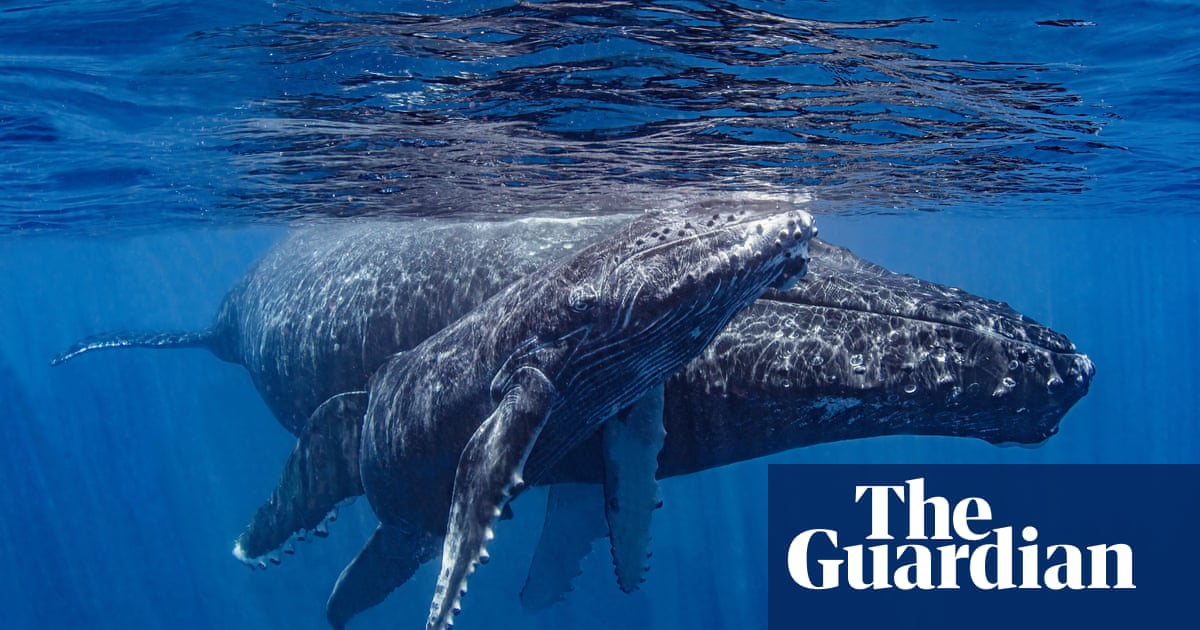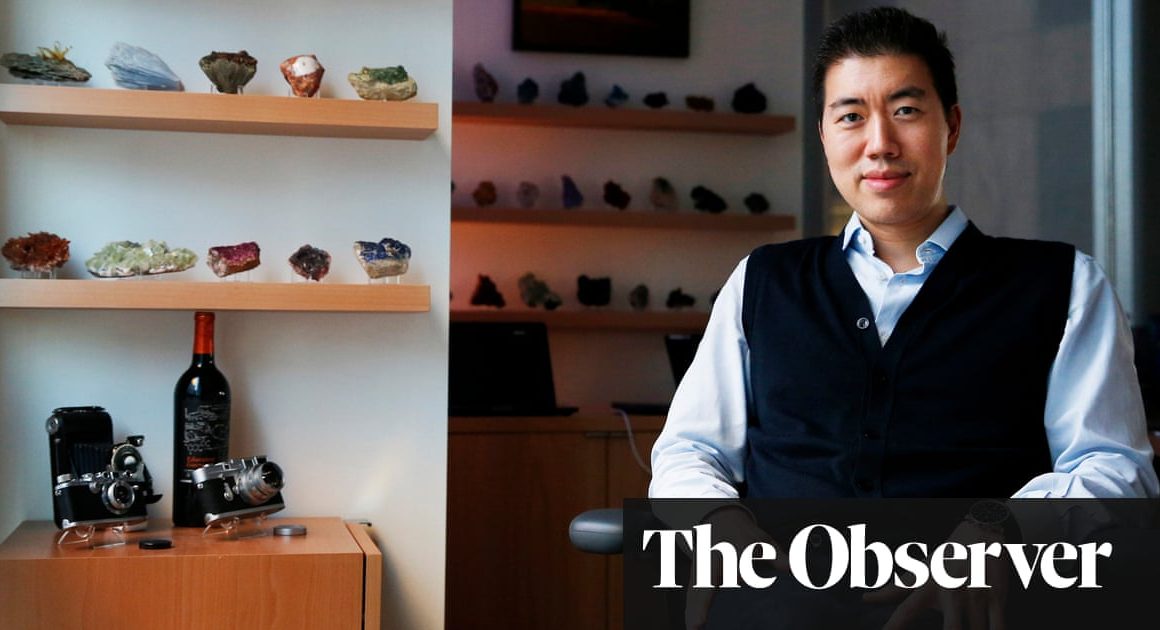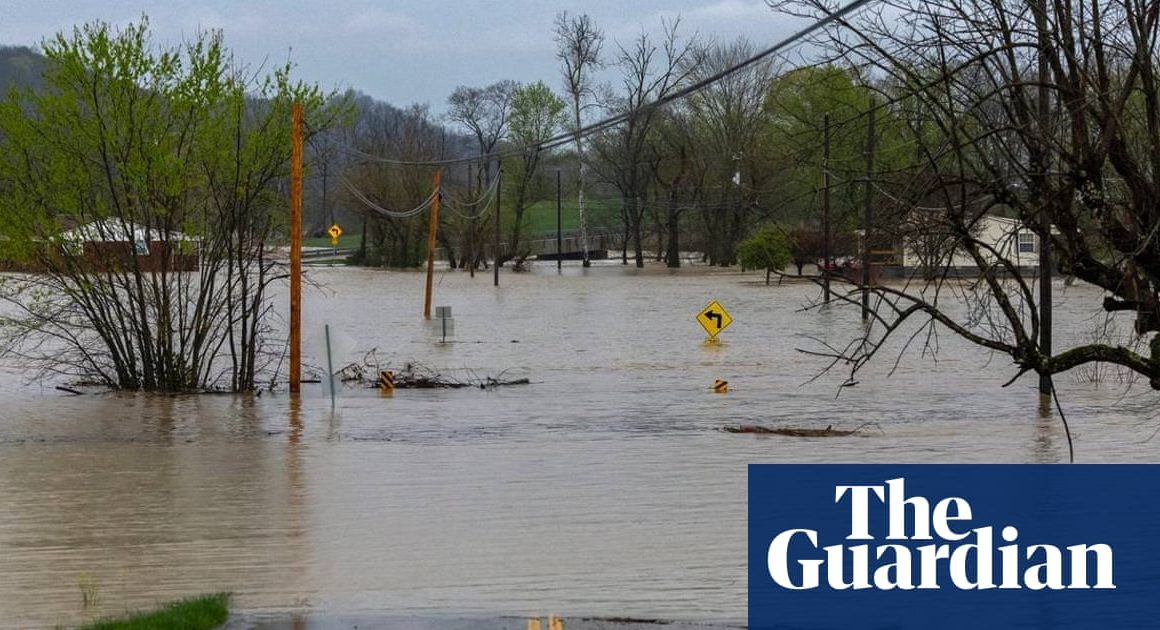Lisette Muratore swam with humpback whales for the first time off the coast of Mo’orea, an island in French Polynesia, as part of a guided tour. She describes the experience as “overwhelming.”
“You have a sudden realisation of the immensity of these creatures … seeing their wild beauty, it’s almost like there’s something sacred about them. When the baby [humpback whale] looked straight into my eyes it felt almost like I was looking at a god.”
A handful of Pacific Islands allow tourists to swim with humpback whales and in recent years, French Polynesia and Tonga have become increasingly popular destinations for this kind of tourism.
The marine mammals, which can grow to around 16m in length and weigh up to 36 tons, travel through the islands’ warm waters every year to give birth, rest and nourish their young before their long migration down to Antarctica.
Whale-watching tourism generates over $2bn in revenue, according to the International Whaling Commission – and the Pacific industry is growing. In French Polynesia, the number of certified whale-based tourism operators rose from 60 in 2023, to 90 in 2024, according to Tahiti Tourism.
But their growth has raised concerns over the potential harm to the animals. In April, a report by French Polynesia’s government said “increasing pressure on whales from human activities poses a considerable risk to these fragile animals.” It said due to the rising number of whale-based tourism operators, “cetaceans can be relentlessly pestered throughout the day.”
In response, French Polynesia plans to introduce new rules to reduce risks to whales, but some in the industry say they don’t go far enough.
“The government just keeps giving new [whale watching] permits,” says Temoana Poole, a founder of whale-based tourism operator WildMā.
Poole says boats in Mo’orea have been increasing year after year – and estimates there are more than 50 working on his island alone. “They need to put a quota on it,” he says.
Guardians of the sea
In Polynesian cultures, humpback whales are sacred animals, often seen as guardians or ancestors. Earlier this year, Indigenous leaders from French Polynesia, New Zealand and other Pacific islands signed a treaty granting whales legal personhood in a combined effort to protect them.
French Polynesia is home to one of the world’s largest marine sanctuaries for whales, and all marine mammals are protected species. The local tourism industry offers whale watching and swimming-with-whales tours. There are rules in place, including that operators must have a permit amd tourists must swim with a certified guide.
In 2025, French Polynesia will tighten some regulations for whale-based tourism. It will introduce a quota, with only three boats permitted to approach a whale at the same time. It will restrict whale-watching operators to one boat for each company, and private boats will have to stay at least 300m away.
But in a move that seems at odds with improving protections, divers will be able to swim closer to whales from next year, when the current limit of 30m from the mammals will be dropped to 15m. The government says the new limit still means swimmers will be a “safe distance” away.
“The reality on the ground shows that at 30m you can’t see much, and the animal often approaches out of curiosity anyway. But it’s still important to keep a safe distance, which we’ve set at 15m,” says Fanny Martre, spokesperson for the environment department.
Dr Mark Orams specialises in marine tourism and studied whale-based tourism in Tonga. He says allowing swimmers to get within 15m of a humpback whale is “dangerous.”
“These whales are 15 metres in length. You get within 15 metres and you are in immediate proximity of their biggest weapon which is their tail … I would be really concerned if there were approaches at that sort of length,” says Dr Orams.
He adds that we probably shouldn’t be swimming with whales – especially not with mothers and their calves. In a study he co-authored, researchers found that swimming with whales had a negative effect on the behaviour of mothers and calves in Tonga.
‘Brings light into the world’
Dr Agnès Benet, marine biologist and founder of the not-for-profit group Mata Tohora, has been campaigning for mandatory “quiet periods” during the day, without any boats or swimmers, to allow marine mammals to rest.
“In the second biggest sanctuary for marine mammals in the world, we might expect to have a period of time without human activity, to fulfil the original purpose of having a ‘sanctuary,’” says Benet.
WildMā’s Poole wants tourists to be sold “whale watching” experiences rather than whale swimming or diving. Getting in the water depends on the conditions being safe for the whales – and if that does happen it’s “the cherry on the cake.”
But experts and locals agree that whale-based tourism can be done ethically and respectfully.
Poole says that a portion of their earnings goes back into funding whale research and conservation, and supporting the local community.
He says when its done properly, whale tourism “brings so much light and love into the world, and to the people.”












